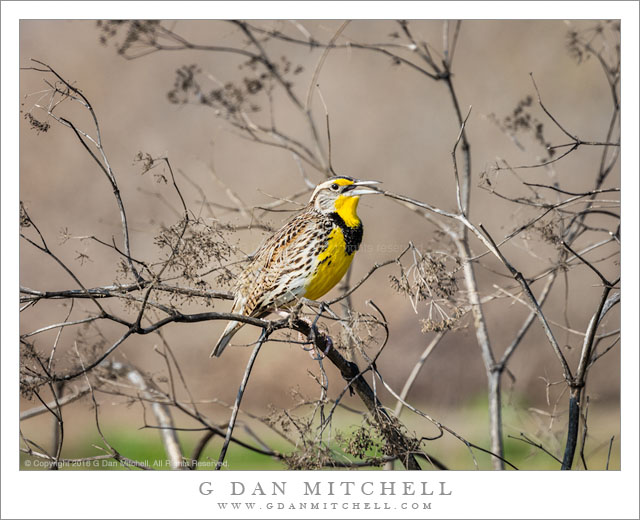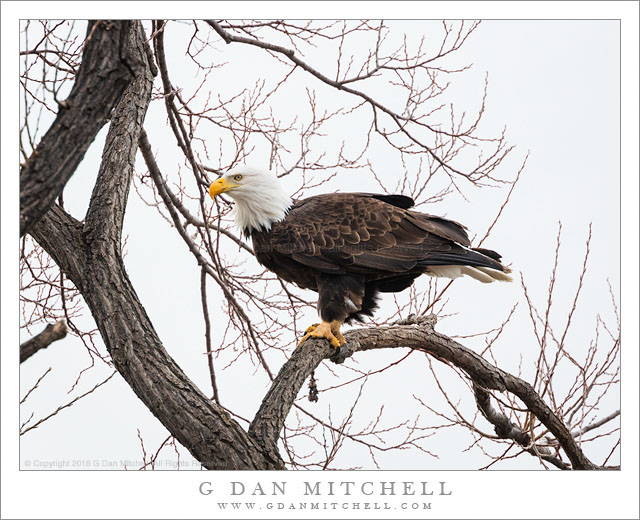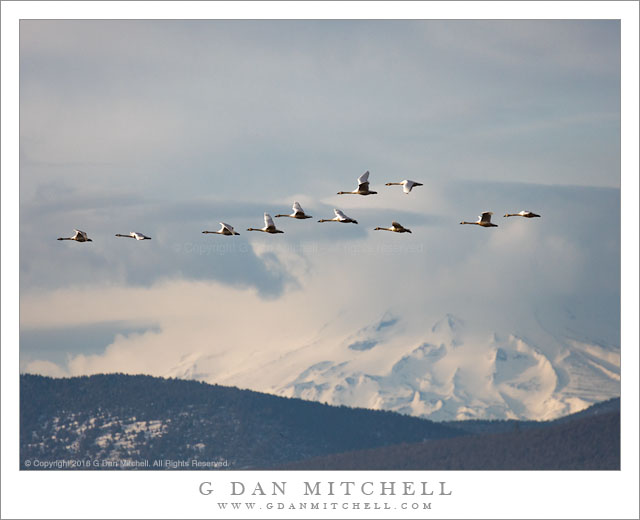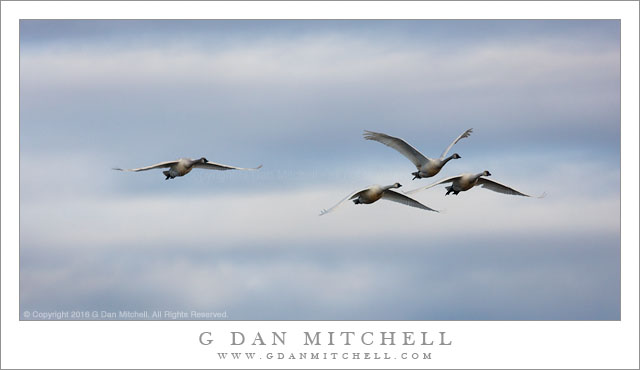
Western Meadowlark. San Joaquin Valley, California. February 15, 2016. © Copyright 2016 G Dan Mitchell – all rights reserved.
Western Meadowlark perched in San Joaquin Valley branches
I’m going to indulge my bird photograph collection interest and share what is really just a photograph of another little bird! This beautiful little bird was a side attraction I found during a recent visit to the California Central Valley to mainly photograph geese and cranes, plus the odd heron and egret.
Photographing the larger birds is an experience that often vacillates between moments of wildly photographing as birds fly above, or as huge flocks take to the sky, and then long periods of not doing much at all — waiting for birds, trying to figure out where the birds are, moving to another location to find birds, and so forth. But I’ve found that when I keep my eyes open I find interesting things that aren’t what I was initially looking for. That was the case with this yellow western meadowlark, which was standing in some brush alongside a perimeter road at a wildlife refuge and which I just happened to spot while passing by.
 G Dan Mitchell is a California photographer and visual opportunist. His book, “California’s Fall Color: A Photographer’s Guide to Autumn in the Sierra” is available from Heyday Books and Amazon.
G Dan Mitchell is a California photographer and visual opportunist. His book, “California’s Fall Color: A Photographer’s Guide to Autumn in the Sierra” is available from Heyday Books and Amazon.
Blog | About | Flickr | Twitter | Facebook | Google+ | 500px.com | LinkedIn | Email
All media © Copyright G Dan Mitchell and others as indicated. Any use requires advance permission from G Dan Mitchell.



